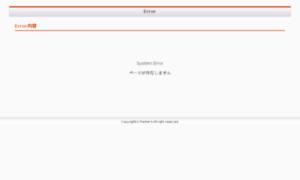


This volumetric sulcus definition is conceptually simple, anatomy‐based, educationally friendly, quantitative, and constructive.

Correspondingly, the gyrus is defined as a volumetric region on the cortical mantle separated from its adjacent sulci at the level of its gyral white matter crest line. Consequently, the sulcal inner surface is demarcated by the crest lines of the gyral white matter of its adjacent gyri. The sulcus is defined here as a volumetric region on the cortical mantle between adjacent gyri separated from them at the levels of their gyral white matter crest lines. The contribution of this work is threefold, namely to (1) propose a new, morphology‐based definition of the term sulcus (and consequently that of gyrus), (2) formulate a constructive method for sulcus calculation, and (3) provide a novel way for the presentation of sulci. As the cerebral sulci (and gyri) are vital in cortical anatomy which, in turn, is central in neuroeducation and neuroimage processing, a new sulcus definition is needed. Illustration of selected functionality: atlas content selection (gross anatomy with the cerebrum, cerebellum, brainstem, and cervical spinal cord deep nuclei white matter tracts on the right intracranial arterial system intracranial venous system extracranial arterial system and cranial nerves on the right), virtual brain cutting (anteriorly in coronal direction), permanent (manipulation independent) labeling (with a resizable arrowhead, line segment, and text), quantification (the distance measured between the left internal carotid artery, cervical part and the right vertebral artery, extracranial part), and at the actually pointed structure (the left sigmoid sinus) its transient labeling (with name and diameter), stereotactic coordinates (bottom-left in the main view), and highlighting in the intracranial venous system index (in red)Īlthough the term sulcus is known for almost four centuries, its formal, precise, consistent, constructive, and quantitative definition is practically lacking. Components of the user interface: main view with a composed 3D model (center) matrix of selectable tissue clusters and individual tissue classes (top-right) and a manipulation panel below it (additionally, all manipulation functions are mapped into the mouse buttons) horizontally scrollable selected tissue class panels for left/right side and group selections (top-left) indices of all selected tissue classes, each with the list of selectable structures, synchronized with their corresponding panels (right) controls including the dissection and triplanar panel control (left) and info “i” (bottom-left in the main view). Illustration of the brain atlas user interface along with its selected functionality (from The Human Brain, Head and Neck in 2953 Pieces atlas, Nowinski et al., 2015). It establishes a backbone for designing and developing new, multi-purpose and user-extendable brain atlas platforms, serving as a potential standard across labs, hospitals, and medical schools. This novel architecture supports brain knowledge gathering, presentation, use, sharing, and discovery and is broadly applicable and useful in student- and educator-oriented neuroeducation for knowledge presentation and communication, research for knowledge acquisition, aggregation and discovery, and clinical applications in decision making support for prevention, diagnosis, treatment, monitoring, and prediction. Each unit is described in terms of its function, component modules and sub-modules, data handling, and implementation aspects. It contains four functional units, core cerebral models, knowledge database, research and clinical data input and conversion, and toolkit (supporting processing, content extension, atlas individualization, navigation, exploration, and display), all united by a user interface. The proposed architecture determines major components of the atlas, their mutual relationships, and functional roles. The human brain atlas is defined as a vehicle to gather, present, use, share, and discover knowledge about the human brain with highly organized content, tools enabling a wide range of its applications, massive and heterogeneous knowledge database, and means for content and knowledge growing by its users. Subsequently, an architecture of a multi-purpose, user-extendable reference human brain atlas is proposed and its implementation discussed. Here I introduce a new definition of a reference human brain atlas that serves education, research and clinical applications, and is extendable by its user. Human brain atlas development is predominantly research-oriented and the use of atlases in clinical practice is limited.


 0 kommentar(er)
0 kommentar(er)
